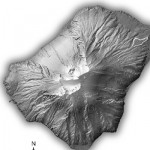Linguistic Awareness in the Development of the Anatolian Hieroglyphic Sign Values
Miguel Valério
One theory sustains that the invention of writing is linguistically determined and limited to societies whose language is rich in monosyllabic morphemes (Daniels 1992; Boltz 2000). Its validity, however, depends on an assessment of the role of acrophony in the invention of scripts across the globe, something which is still unrealized. As far as the Anatolian Hieroglyphic script is concerned, Hawkins (1986) set forth the only attempt to understand the linguistic rationale behind the use of rebus and acrophony in the script’s invention. In his opinion, a pattern is observable: the syllabic values of the signs were always drawn from monosyllabic or reduplicated stems of Luwian or Hittite words. Thirty years on, this picture of Anatolian Hieroglyphic, while not far from reality, needs to be fully reassessed. This article represents an effort towards that goal.



